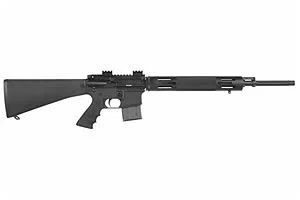Bushmaster Predator vs Massachusetts Arms Smith Carbine
Put rifles head to head to compare caliber and more.
|
$706.19
|
vs |
$0.00
|
| Rifles | Bushmaster Predator | Massachusetts Arms Smith Carbine |
|---|---|---|
| Summary | ||
| Rating | ||
| Rank | ||
| Length | 38.25" | |
| Action | Semi-Automatic | |
| Caliber | .223 Remington | .50 BMG |
| Finish | Black | Black |
| Barrel Length | 20" | |
| Capacity | 17+1 | |
| Sights | Dovetail 3 Dot | |
| Gun Type | Rifle | |
| Details | ||
| Brand | Bushmaster | |
| Reviews | See 3 Reviews | N/A |
| Prices | ||
| MSRP | $710.19 | $0.00 |
| Used Price | $497.13 | $0.00 |
| Sale Price | $639.17 | $0.00 |
Rifles Descriptions
Bushmaster Predator
* This model is not California compliant it does not have the required bullet button. Stock :Black A2 Metal Finish :Black Muzzle :No Muzzle Device Receiver Material :Aluminum Sights :None (Optics Ready) Barrel Description :Chrome Moly Steel Fluted Twist :1:8" State compliant model.
Massachusetts Arms Smith Carbine
The Smith carbine was patented by Gilbert Smith of Buttermilk Falls, New York and successfully completed the Military Trials of the late 1850s. 30,362 examples were manufactured during the Civil War by both Massachusetts Arms Co. and American Arms Co., both of Chicopee Falls, MA. Nearly all of the Smith carbines manufactured were purchased by the Federal government for military issue, with a few finding their way to the commercial market. Federal cavalry units which were issued the Smith carbine include the 1st Connecticut, 1st Massachusetts, 6th and 9th Ohio, 7th and 17th Pennsylvania, and 3rd West Virginia. It was one of the most important Federal Cavalry carbines. The left side of the receiver, stamped vertically, is "ADDRESS / POULTNEY & TRIMBLE / BALTIMORE, U.S.A." Below the address line is stamped vertically, just behind the sling ring bar, "SMITH'S PATENT / JUNE 23 1857." Towards the front left side of the receiver, stamped vertically, is "MANUFACTURED BY / MASS ARMS CO. / CHICOPEE FALLS." The Smith Carbine was unique in that it broke apart in the middle for loading and it used combustible paper cartridges which sealed the gases in the breech. The downside was that these cartridges were difficult to remove.



